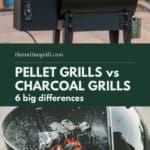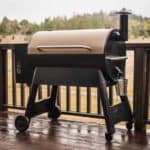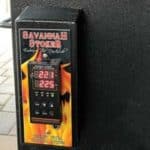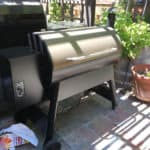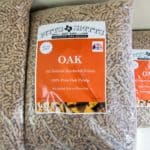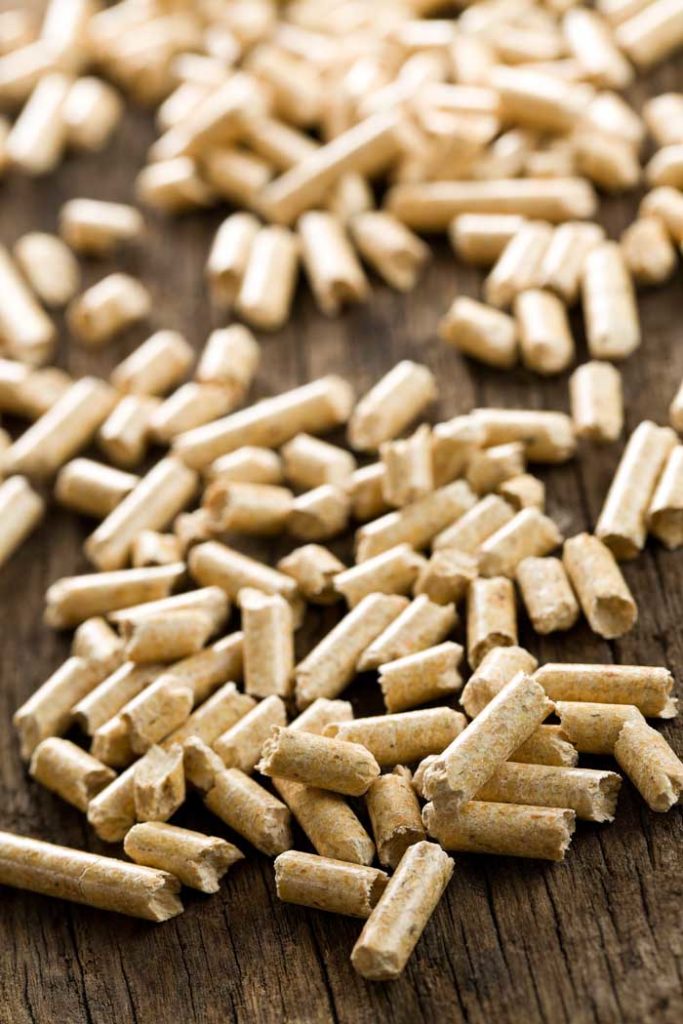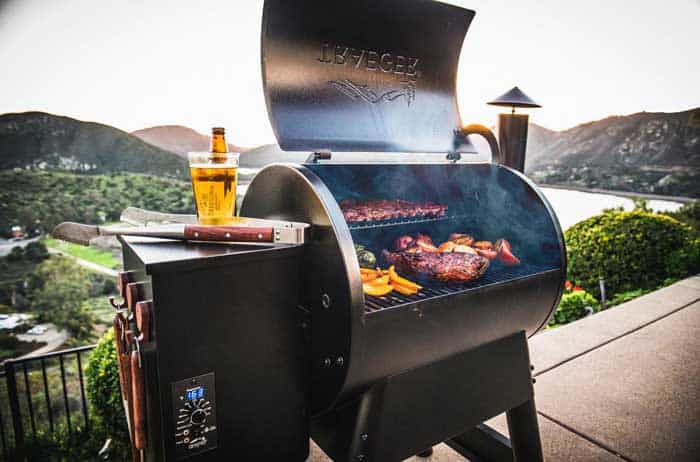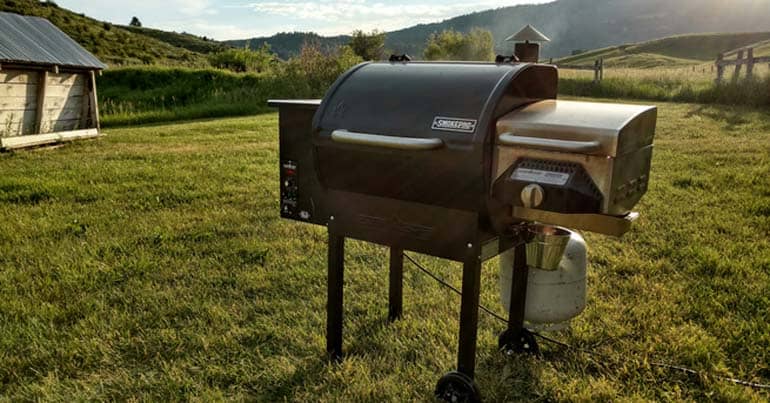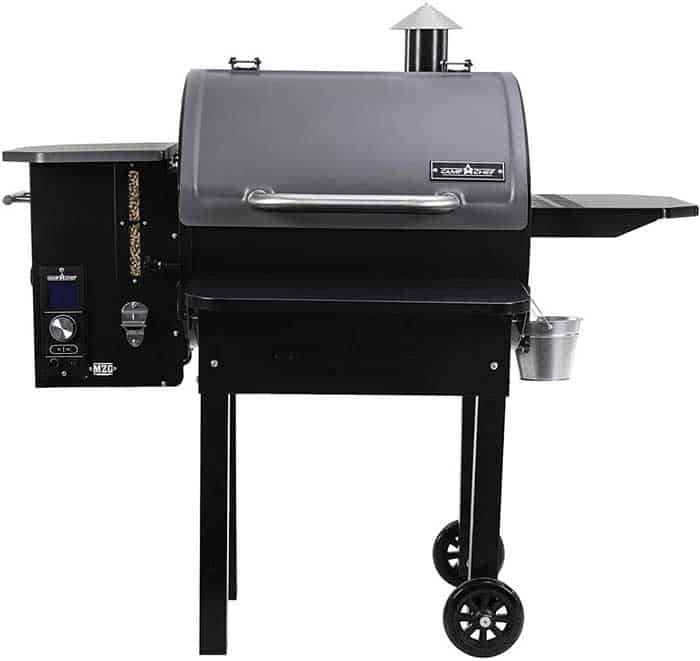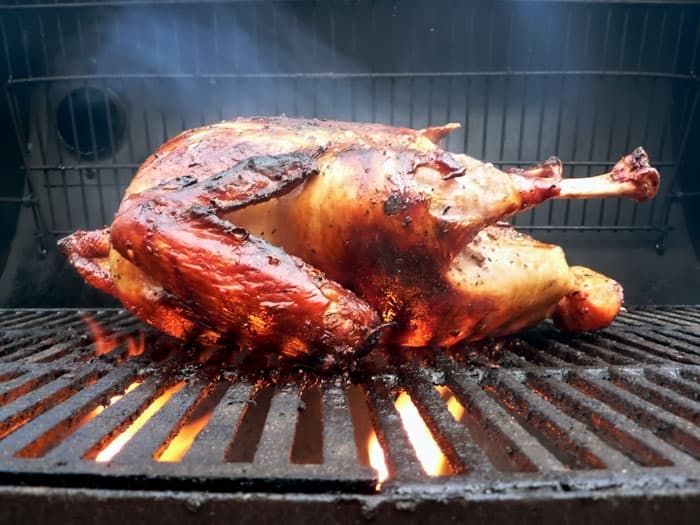Wood pellet cooking and charcoal grilling have a lot of differences. From temperature ranges to fuel costs, there’s a lot to consider. We’re here to make that investment a little bit easier. Here’s everything you need to know about the differences between pellet grills and charcoal grills.
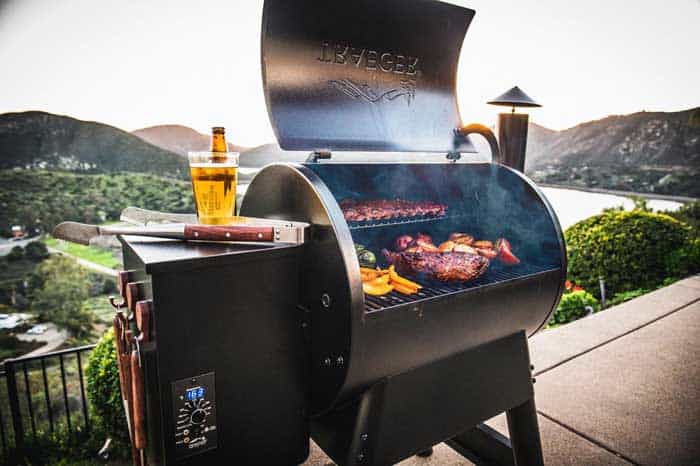
Two of the best ways to cook in the backyard are undoubtedly with either a pellet smoker grill or a charcoal grill.
Both are great at grilling meat, and for generating the smokey and charred aromas that we all associated with the way of cooking.
But which is best? Which type of cooker should you get if you’re delving into the world of grilling for the first time? In this guide we’re going to lay out the main differences between them, and who each one is best suited for. Where will you fall on the pellet grill vs charcoal grill debate?
Food flavor
The two grill types use two very different fuel sources for heat, so it stands to reason that the resulting smoke and flavor that’s generated by each vary significantly from each other. Pellet smoker grills use wood pellets fed through an auger, which – unsurprisingly – leads to a slight wood flavor on your grilled food.
Wood pellets tend to burn cleaner than charcoal, which can mean that they don’t generate as much smoke. They can even generate less smoke than wood chips used on charcoal smokers or grills.
Charcoal grills generally use lumpwood charcoal as their fuel, and carry the unmistakable scent and flavor of charcoal. They also can churn out a good deal of smoke, and can be taken to another level with the use of wood chunks, like hickory, mesquite, or oak.
Costs
Costs need to be broken down into initial cost and operating costs. We’ve seen that even though propane grills can be more expensive, their fuel costs can make them more economical in the long run, especially if you convert to natural gas. Does a similar logic apply when comparing pellets and charcoal appliances?
Initial costs
Pellet grills are almost always more expensive than charcoal. We’ve seen many pellet models push close to $1000, and sometimes even higher (although it’s not hard to find some pellet grills under $500). In contrast, some charcoal kettle grills can be as cheap as under $100.
Operating costs
This is where the comparison gets a little bit more difficult. Charcoal briquettes can be very cheap, but I never recommend using them. They’re cheap for good reason: They’re rammed full of chemical filler, and can release a nasty odor. Instead, I always recommend going for lump charcoal. The downside is that it can be a bit pricier.
Pellet grills are also built with a motor that feeds the firebox with pellets from the hopper. Like any mechanical component, it runs the risk of breaking down after long term continuous use. Parts like replacement motors can cost in excess of $50, and are also completely dependent on the exact brand and model you have.
Charcoal grills are essentially a chamber with a lid, so don’t incur the same maintenance costs as their wood pellet counterparts.
Pellets can usually only be stored for 1-3 months before they are spoilt by air moisture (source). If you have special storage then this can sometimes be extended to 6 months, but their shelf life is quite short. In contrast lump charcoal can often last up to 2 years if stored properly (source).
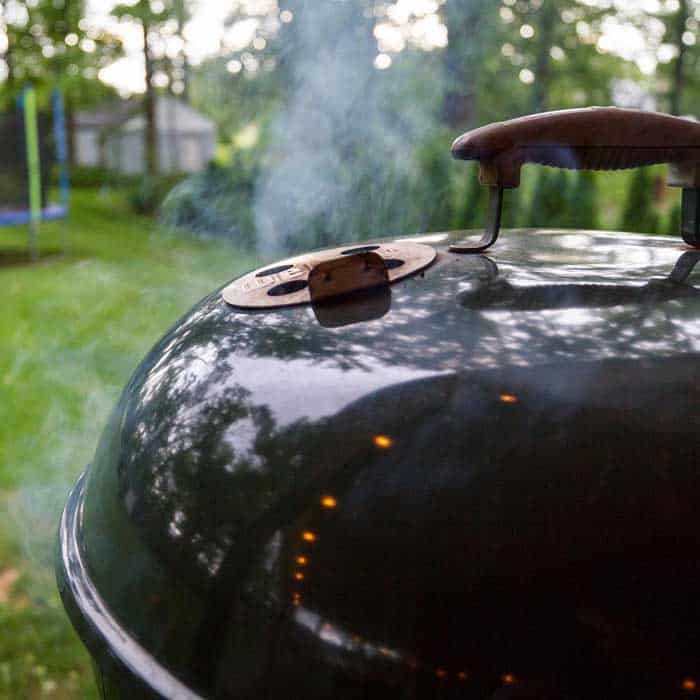
Temperature control
Charcoal grills are difficult by nature. Everything about them is manual, so there is a steep learning curve when getting to grips with them. Lighting a charcoal grill is notoriously difficult, and can involve the use of a charcoal chimney. It doesn’t end there though. Once you’ve gotten to grips with lighting it, you need to learn how to use your grill’s vents to control temperature, how to keep it hot, and ultimately how to put it out safely and efficiently. What can make this even more difficult is that how you do this will depend on whether you want to grill directly at a high temperature, or set things up for a slow smoker at 225°F.
Pellet grills, on the other hand, are designed and built with ease of use in mind. WIth a motored augered and temperature monitor built in, all that’s required from you is to fill the hopper with pellets, and set your target cooking temperature. If you want to ramp up the heat, all you need to do is set the dial accordingly. The motor will then feed the grill with pellets at a greater rate, which in turn creates a hotter fire.
Heat range
Pellet smoker grills are primarily built with smoking in mind. Their typical temperature range reflects this, with them designed to accommodate temperatures more suited for low and slow cooking. While they can crank up the heat in excess of 450°F, they can’t usually hit the high temperatures that charcoal can, and often struggle to break 500°F.
Charcoal grills can easily be set up for smoking through the use of 2-zone indirect grilling, however maintaining those temperatures is a big challenge. They really come into their own when grilling to high temperatures and, depending on the lumpwood you’re using, can often break through 800°F.
Fuel efficiency
Each wood pellet can release a lot of energy per pellet, which means that if you are cooking low and slow then the grill motor can run at a slow speed. As a result, pellet grills can often run for over 6 hours without the need to refill the hopper. If you primarily use it for smoking, then your ongoing fuel costs will be low over time.
Charcoal can burn for hours, too. Typically you can use the same charcoal for 3-4 hours, so it’s not unheard of to do an entire 8-10 hour smoke while only replacing the coals once. If you lose control of your vents though or decide to ramp up the heat, then you can expect to get through those same coals in 45 minutes.
Who are they for?
Pellet grills are for people who:
- Love the aromas and flavors of wood cooking
- Prioritise barbecue smoking over high temperature grilling
- Don’t want to manage every aspect of temperature control
- Are happy to spend more money
- Value convenience over being ‘hands on’
- Want to use cleaner fuel sources
Advantages of pellet grills
- They’re quick and easy to start
- Can manage consistent temperatures easily
Negatives of pellet grills
- Need to be run in range of electricity source
- Will need replacement parts after long term use
- The auger can jam over time or if you use low quality pellets
Charcoal grills are for people who:
- Want to learn how to properly control fire and airflow in their grill
- Love the unique aromas and flavors of charcoal cooking
- Prioritise high temperature grilling over low and slow smoking
- Are on a budget
- Want to take their grill on the road with them
Advantages of charcoal grills
- Very low initial cost
- Versatility between high heat searing and barbecue smoking
- Can achieve very high temperatures
- A more ‘authentic’ way of grilling and barbecue
Negatives of charcoal grills
- Difficult to learn how to use for beginners
- Lump charcoal can be difficult to clean after continuous use
- Charcoal is notoriously difficult to light
